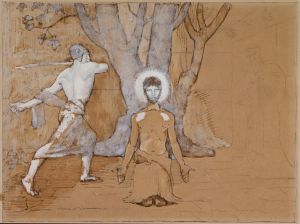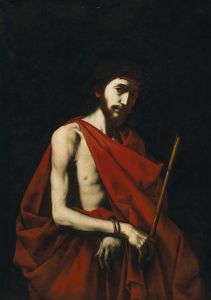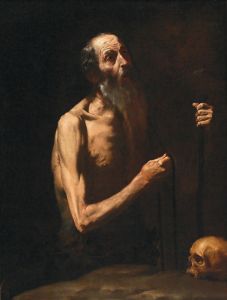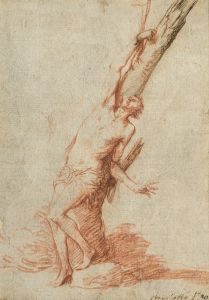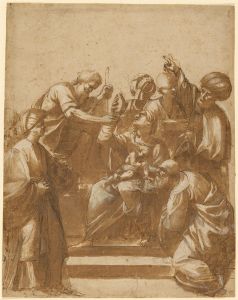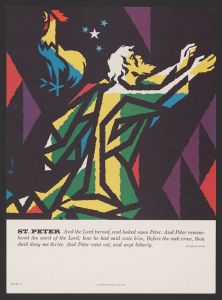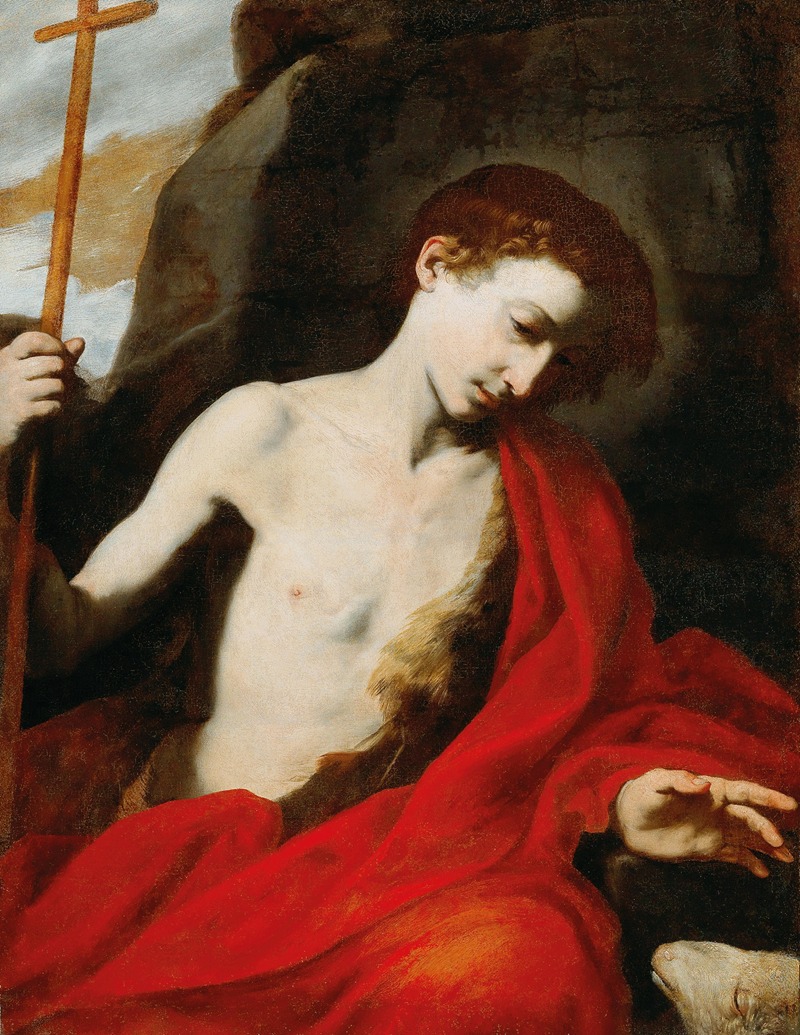
Saint John the Baptist
A hand-painted replica of Jusepe de Ribera’s masterpiece Saint John the Baptist, meticulously crafted by professional artists to capture the true essence of the original. Each piece is created with museum-quality canvas and rare mineral pigments, carefully painted by experienced artists with delicate brushstrokes and rich, layered colors to perfectly recreate the texture of the original artwork. Unlike machine-printed reproductions, this hand-painted version brings the painting to life, infused with the artist’s emotions and skill in every stroke. Whether for personal collection or home decoration, it instantly elevates the artistic atmosphere of any space.
"Saint John the Baptist" is a painting by the Spanish Baroque artist Jusepe de Ribera, who was active during the first half of the 17th century. Ribera, also known as "Lo Spagnoletto" (the Little Spaniard), was renowned for his dramatic use of chiaroscuro and his realistic depiction of human figures, often with a focus on religious and mythological subjects. His works are characterized by their intense emotional expression and meticulous attention to detail.
This particular painting, "Saint John the Baptist," is a testament to Ribera's mastery in portraying religious figures with a profound sense of realism and humanity. The painting depicts Saint John the Baptist, a significant figure in Christian theology known for baptizing Jesus Christ and preaching about repentance and the coming of the Messiah. Ribera's depiction of Saint John is both powerful and contemplative, capturing the saint in a moment of introspection.
In the painting, Saint John is typically shown as a solitary figure, often in a wilderness setting, which aligns with the biblical accounts of his life. He is usually depicted wearing simple, rugged clothing made of camel hair, symbolizing his ascetic lifestyle. Ribera's use of chiaroscuro is evident in the strong contrasts between light and shadow, which serve to highlight the saint's facial features and muscular physique, emphasizing his spiritual strength and resolve.
Ribera's attention to anatomical detail is notable in this work, as he captures the sinewy texture of Saint John's skin and the ruggedness of his attire. The artist's ability to convey texture and form adds a tactile quality to the painting, inviting viewers to engage more deeply with the subject. The background is often kept minimal, focusing the viewer's attention on the figure of Saint John and enhancing the painting's dramatic impact.
The emotional intensity of Ribera's "Saint John the Baptist" is further amplified by the saint's expression, which conveys a sense of solemnity and contemplation. This aligns with the traditional iconography of Saint John as a prophet and a precursor to Christ, who is often depicted in moments of deep thought or prayer. Ribera's portrayal captures the dual nature of Saint John as both a man of the wilderness and a spiritual leader, bridging the earthly and the divine.
Ribera's work was highly influential in the development of Baroque art, particularly in Spain and Italy, where he spent much of his career. His paintings are noted for their dramatic realism and emotional depth, qualities that are vividly present in "Saint John the Baptist." This painting, like many of Ribera's works, reflects the artist's deep engagement with the human condition and his ability to convey complex theological themes through the medium of paint.
Today, "Saint John the Baptist" by Jusepe de Ribera is appreciated not only for its artistic merit but also for its contribution to the religious and cultural discourse of the Baroque period. Ribera's ability to blend realism with spiritual symbolism makes this painting a significant work in the canon of Western art, offering insight into the religious fervor and artistic innovation of the 17th century.







